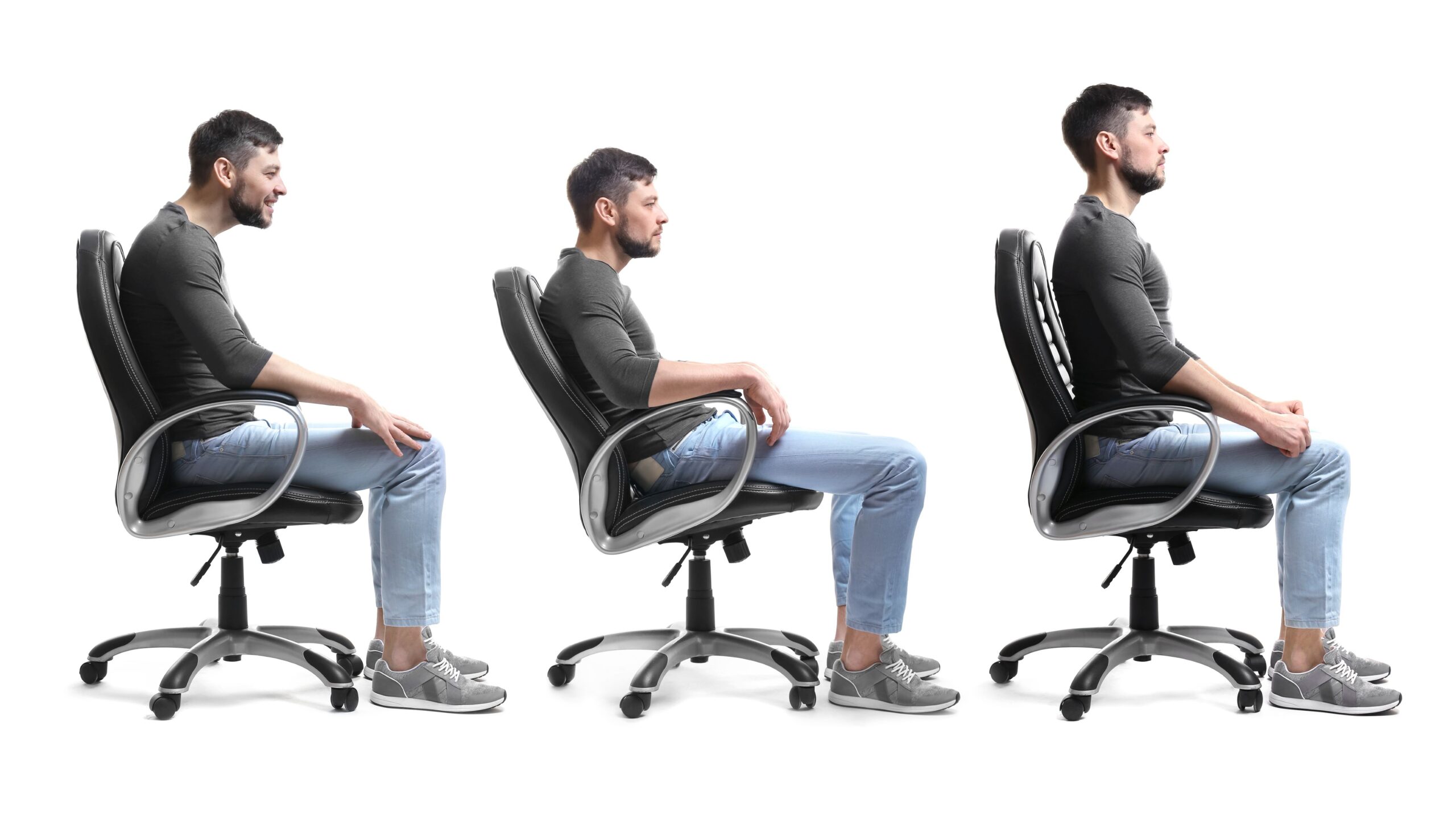Poor sitting posture contributes to and perpetuates neck pain. Correcting your posture is an important factor in recovering from neck and back pain. Correcting your sitting posture will also help prevent future episodes of pain. This article shows you how to correct your sitting posture.
Why Correct Your Sitting Posture
Sitting postural correction becomes especially important for those of us who spend a great deal of our time working at a computer or seated at a workstation. Most present-day occupations and many leisure activities (involving the internet or a mobile device) place the neck and upper back in vulnerable positions. This stresses many anatomical structures in and around your neck.

Frequent correction of your posture serves two primary functions. First, it allows for regular reduction of adverse loads placed on the joints of the spine due to poor neck and upper back posture. Second, it provides a training effect to the deep cervical stabilizing muscles.
Postural correction strategies aim to change postural habits, not to strengthen weak muscles. Ultimately this should result in a comfortable low-effort strategy. This means you can easily assume and maintain it during prolonged sitting activities. We discourage rigid high-effort correction of your posture. This often results in increased muscle activity and pain.
Key Aspects of Your Seating Surface
- Place your feet flat on the floor
- Sit with your hips slightly higher than your knees
- Position your buttocks completely supported on the seating surface
- Go here for more tips on computer ergonomics
The Sequence of Correcting Sitting Posture

- Gently roll your pelvis back and forth until sitting on the bony part deep within your buttock. This restores the natural curve (lordosis) in the small of your lower back. This first step is the most important.
- Without arching or extending your spine, slightly lift your breast bone (sternum).
- Finally, slightly lift the back of your head towards the ceiling to achieve a neutral position of your eyes relative to the horizon. If steps 1 and 2 are performed correctly, minimal to no correction will be needed at the head and neck.
How Long and How Often Should You Correct Your Sitting Posture?
This neutral position should be comfortably maintained for ten seconds and repeated every 10 to 20 minutes during sitting. A timer is recommended to ensure adherence to the schedule. In between repetitions of the postural correction exercise, a relaxed non-rigid posture should be assumed.
We should not attempt to maintain “the perfect posture” during prolonged sitting. This is not recommended or realistic. Over several days or a few weeks of practice, the neutral sitting posture will be more easily attained without conscious thought.
Through self-awareness, your body will learn this new strategy just like any other practiced skill. Now go ahead and try it.
Visit Your Physical Therapist for More Help

Correcting your posture and overcoming neck pain are no easy tasks. It’s ok if you struggle early on. If you would like more help, contact your physical therapist for an appointment. The right exercises and manual therapy delivered by your therapist will speed up your recovery.

